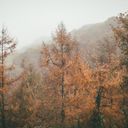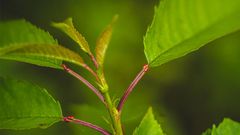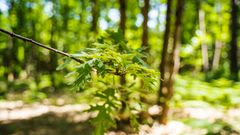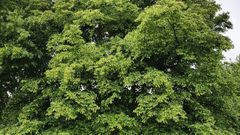

In the wild European Larch (Larix decidua) can grow up to 30-40 meters. The tree belongs to the Pinaceae family and it's one of the few conifers that shed its leaves in winter.
While other species have more demanding growth requirements, European Larch is a pioneer species that has the ability to grow and thrive in soil of poor quality. The species help enrich the soil. That's the reason why EcoTree plants European Larch in some of our forests that have lower soil quality. The tree's good wind resistance makes it an ideal tree for our forests in windy regions of France and Denmark.
This pioneer species grows in soils of poor quality. The species helps to enrich the soil when it drops its needles that turn into humus.
Its largest natural populations can be found in Central Europe. In the Alps, they grow at a latitude of 1,400 to 2,400 meters. In their natural state, on the South-facing slopes (the sunny side), they are found below 1,400 meters in the company of Scots pines and on the North-facing slopes they accompany other pine trees and spruces above 2,000 meters. They are also found among Rowans and Field Maples.
As mountain species, European larch, has been intentionally planted on plains to take advantage of its wood and its ability to enrich poor soils. Larches are very resistant to the cold and can acclimatise to heavy or moderate rainfalls. However, they don't tolerate compact or hydromorphic soils, which can cause larch canker. They can't withstand droughts, but they can survive high temperature changes (a 50° difference in the same day) in their natural states on mountain ranges.
Their deep and highly developed root system burrows firmly into the ground, meaning it needs deep soil to be able to settle there completely. At the same time, this gives European larches exceptional wind resistance, so much so that windfall is hardly an issue for the species.
European larch is sometimes called the oak of the mountain because of the exceptional quality of wood it produces. European larch is the most durable and solid of the coniferous woods. Thus, it's worth the long wait for it to grow big.
As the timber is rot-proof, they are used when building boats, framing, roof shingles, and railroad ties.
European larch is also said to have good medicinal properties in its needles. Briançon manna, a product that seeps from larch needles, is used to increase white blood cell count. Additionally, the tree's resin, Venetian turpentine, has an antiseptic quality.
European larch symbolises maternal love, because they are known to offer shelter to squirrels and birds. The tree often makes out the home of owls. Therefore, the European larch is an original gift for Mother's Day
Give an eco-friendly Mother's Day gift, give a bouquet of trees from a European forest!
Our goal is to enable anyone to do something that benefits nature and helps us to live in a more harmonious world. So why not become a tree owner in a European forest and help combat climate change?






Please note that this is promotional communication. See our notice of information.